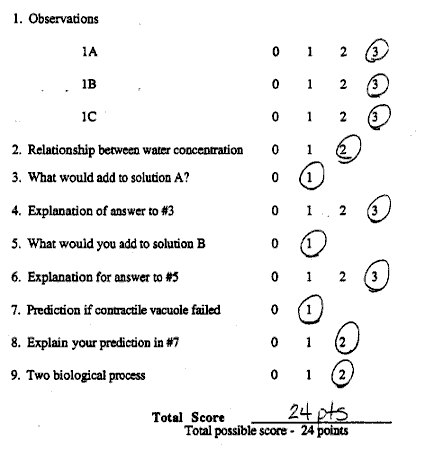 |
 |
|
|
|
Student #1Task: At this station, you will be interpreting data presented in graphs.Background Paramecia are found in stagnant pond water. Excess water is regularly removed from these organisms by the pumping action of contractile vacuoles. Paramecia were place in 3 different solutions: Pond water (containing 95% water and various dissolved minerals), Solution A, and Solution B. While observing a contractile vacuole using the high power magnification (400x) of a microscope, a student counted, in 30 second intervals, the number of times the contractile vacuole pumped water out of the cell and repeated his counts in the three solutions. The results are presented in the graphs below:
Base your answers to the following questions on the previous graphs.

Same as OR Greater than OR Less than 







ScoringCircle the student's score for each part of the exercise. Add the
points for each part and write the total score at the bottom of
the scoring form. 
Go to Next Student Work
|


